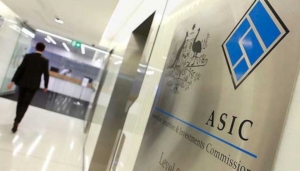2020 saw Australian Federal and State Governments implement an array of incentives to keep Australians in jobs, businesses afloat, and stimulate the economy. Among these were a number of home builders grants to incentivize home-buyers to purchase new builds or make substantial renovations to existing properties, all the while bettering the economy and the building and construction industry.
HomeBuilder
HomeBuilder was introduced on a Federal level, providing a grant to build a new home or renovate an existing home. Initially, this incentive was intended to cease at the end of 2020, however the Federal Government have extended the program until 31 March 2021.
For any contracts signed between 4 June and 31 December 2020, a $25,000 grant is available, whereas any new contract signed between 1 January and 31 March 2021 is eligible for $15,000.
Although HomeBuilder is a Commonwealth initiative, it is administered by State and Territory Revenue offices and is also where you will find the relevant application forms.
To be eligible:
- You must be a natural person (i.e. not a company or trust), 18 years of age or older, and an Australian citizen.
- Have an individual taxable income of less than $125,000 or less than $200,000 for a couple (based on 2018-2019 financial year or later years)
- The deadline for submitting applications has been extended to 14 April 2021 for all eligible contracts signed between 4 June 2020 and 31 March 2021.
- Construction must commence within six months of the contract being signed to receive the grant.
- The property value of a new build cannot exceed $750,000 (exceptions – for contracts signed 1/1/2021 – 31/3/2021, $950,000 in NSW and $850,000 in Victoria)
- Property value for substantial renovation cannot exceed $1.5 million pre-renovation.
- A “substantial” renovation is a contract between $150,000 – $750,000.
Home Construction (Building Bonus) Grant
This grant was introduced by the WA Government for building a new home on vacant land or entering into an off-the-plan contract to purchase a new home. Contracts have to have been entered into between 4 June and 31 December 2020, and provided you’ve done this you can still apply for the $20,000 grant.
The main requirement with the Building Bonus Grant is that construction must be commenced within 12 months from the date of the contract.
Application forms are available for the HomeBuilder and the Building Bonus Grant online via the WA Office of State Revenue.
First Home Owners Grant
As the name suggests, this is a one off payment to assist first home buyers in the purchase of a property which will be their principal place of residence. The grant available is $10,000, however is only available once per transaction. For example, a couple who are both purchasing their first home can only claim a total of $10,000.
Eligibility requirements include factors such as not previously owning residential property, occupying the property for a minimum amount of time depending on circumstances, the value of the home depending on location, and residency.
Application form for the First Home Owners Grant can be found here.
If you’re unsure, speak to an accountant at FAJ to make sure you meet all of the requirements and integrity measures to be eligible to take advantage of these grants.
For advice and assistance with your new or existing home loan contact Kristian from our FAJ Home Loans division.
Other related blogs:
First home super saver scheme – now legislated
Author: Jake Solomon Email: [email protected]

 On the 6 October 2020 as part of the 2020/2021 Federal Budget the government announced an array of initiatives to support business and encourage new investment to help counter the impacts of the COVID pandemic. One of these was the introduction of legislation to allow a company to offset current year losses against prior year profits known as the loss carry back tax offset.
On the 6 October 2020 as part of the 2020/2021 Federal Budget the government announced an array of initiatives to support business and encourage new investment to help counter the impacts of the COVID pandemic. One of these was the introduction of legislation to allow a company to offset current year losses against prior year profits known as the loss carry back tax offset.
 The Jobmaker Hiring Credit scheme was announced as part of the 2021 Budget as an incentive for businesses to create new jobs and have the cost subsidised. Eligible employers can receive $200 per week for each new employee aged 16 to 29 years, or $100 per week for new employees aged 30 to 35 years, hired between 7 October 2020 and 6 October 2021, for up to 12 months.
The Jobmaker Hiring Credit scheme was announced as part of the 2021 Budget as an incentive for businesses to create new jobs and have the cost subsidised. Eligible employers can receive $200 per week for each new employee aged 16 to 29 years, or $100 per week for new employees aged 30 to 35 years, hired between 7 October 2020 and 6 October 2021, for up to 12 months.



 A very simple example might be to plot your sales of various product categories over the last 5 years. Which product groups are trending up, and which are trending down? Once you know that you might make some business decisions about your product lines based on the results.
A very simple example might be to plot your sales of various product categories over the last 5 years. Which product groups are trending up, and which are trending down? Once you know that you might make some business decisions about your product lines based on the results.
